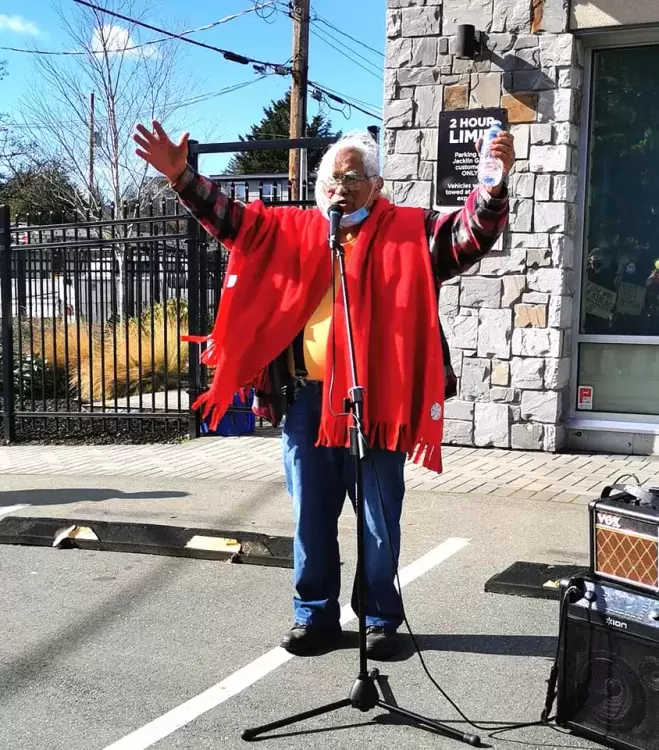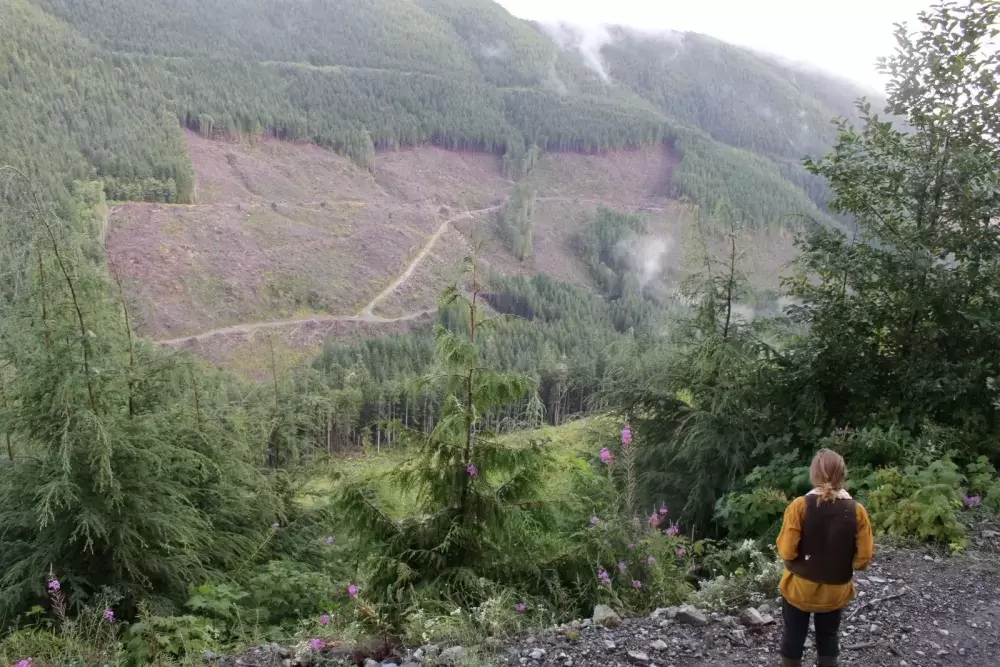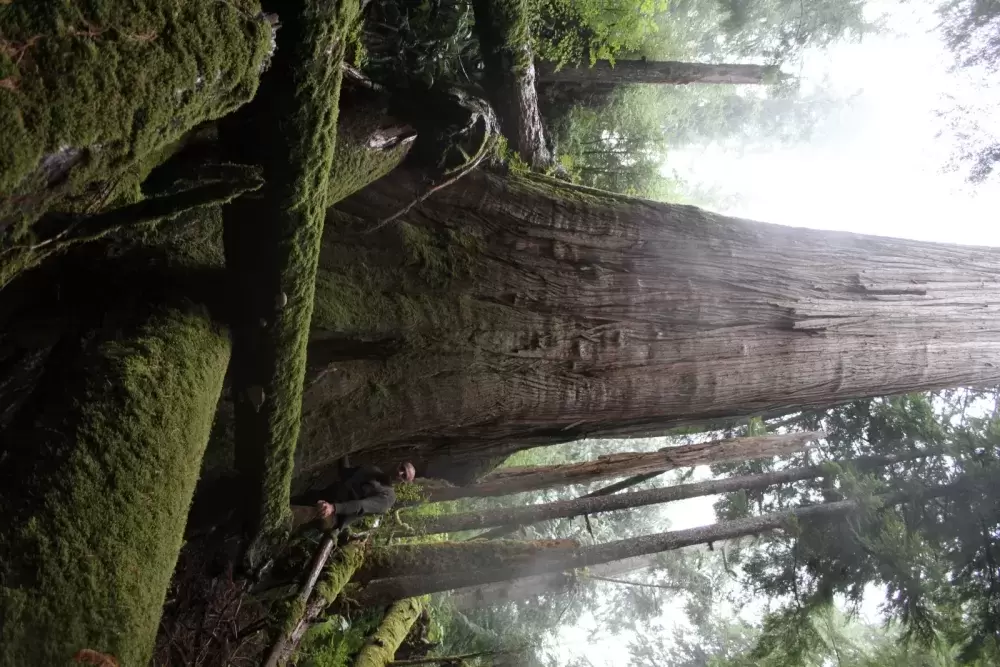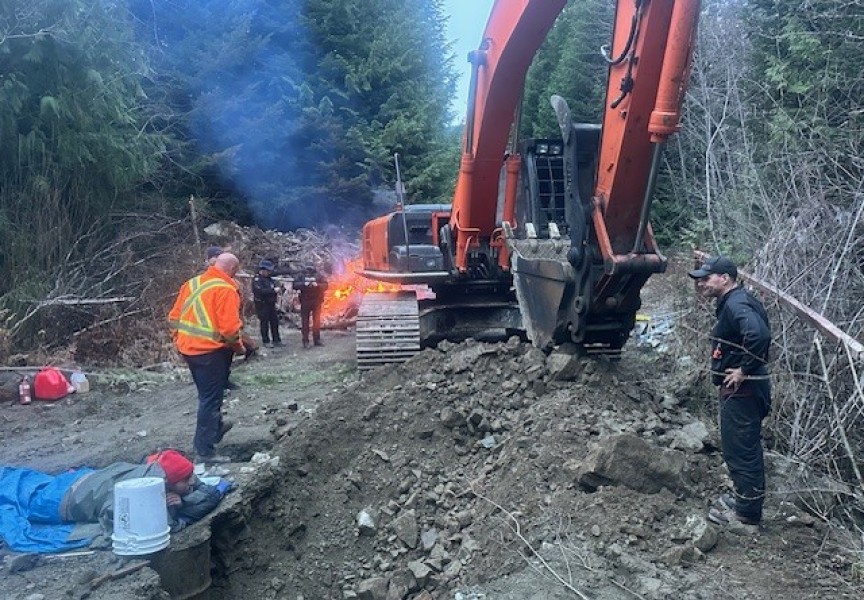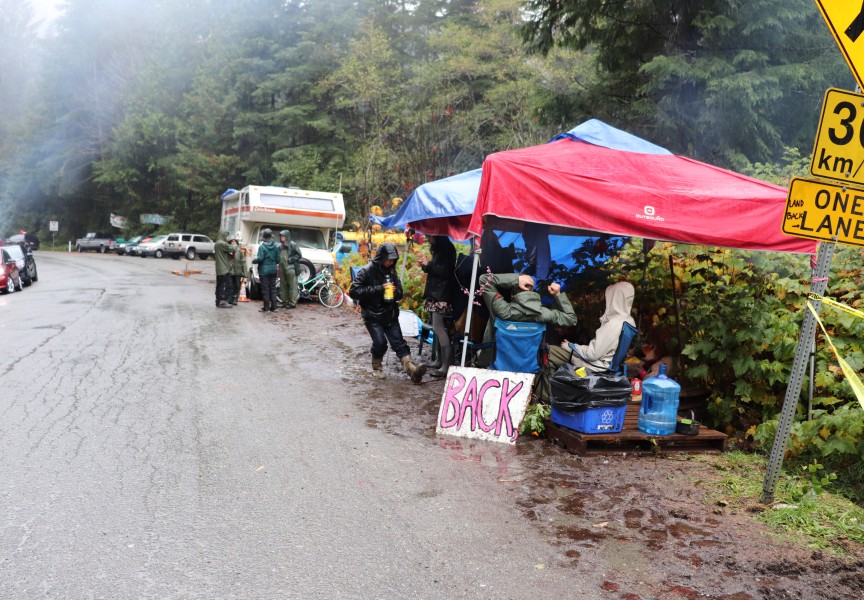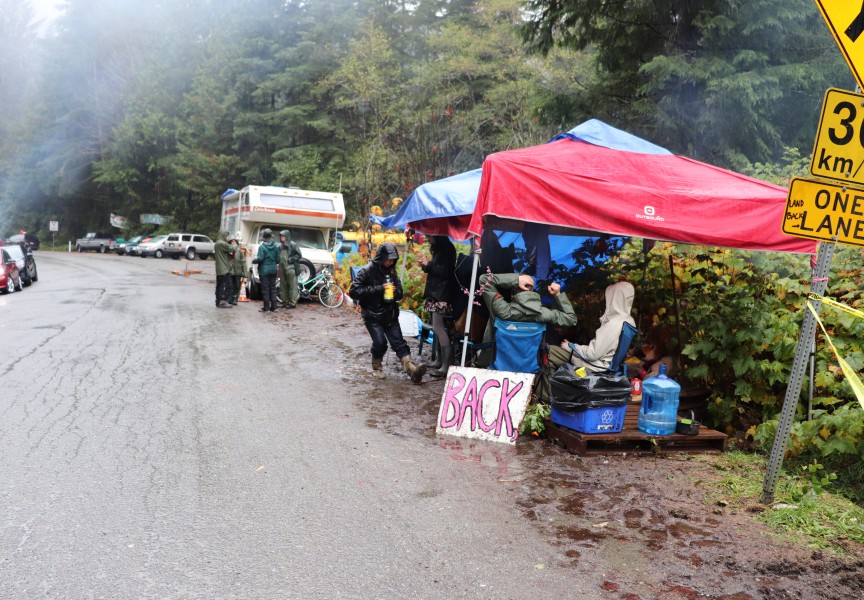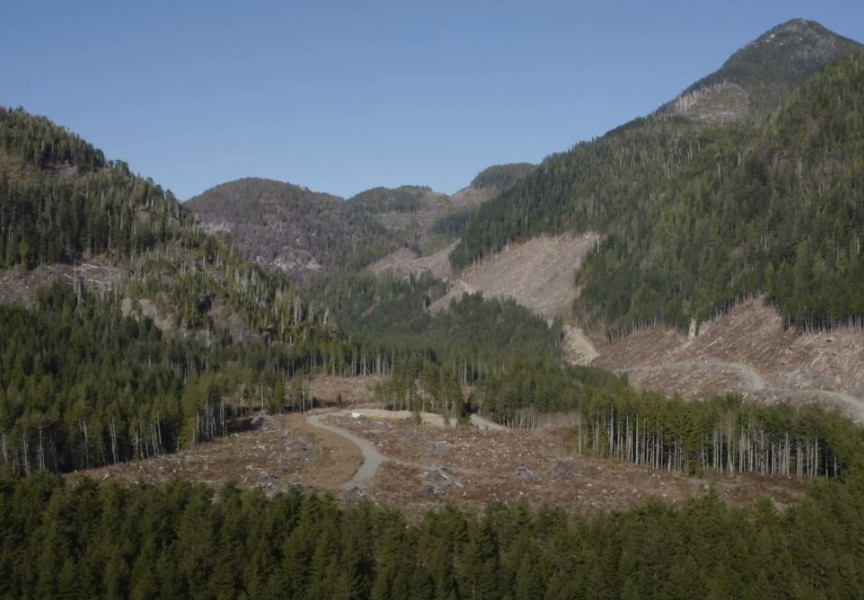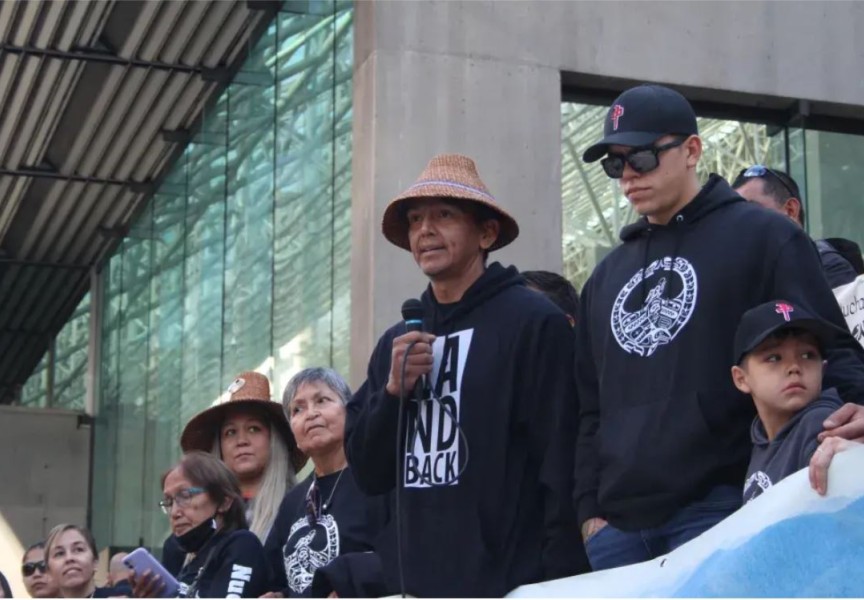Opponents of old growth logging in the Ada'itsx/Fairy Creek watershed near Port Renfrew are demanding provincial government intervention, worried that dwindling stands will be lost before Pacheedaht First Nation concludes treaty negotiations.
Protest camps have blockaded logging activity in the area — part of TFL 46 in Pacheedaht First Nation traditional territory — since August 2020, preventing Teal Cedar Products from building a road into the upper Ada’itsx watershed.
The company filed for a court injunction and enforcement order in February with the aim of having blockades removed before spring break-up prevents roadbuilding.
A B.C. Supreme Court judge last week rejected that appeal for urgency, granting defendants Bob Arbess and fellow protesters, named in court documents as the Rainforest Flying Squad, a three-week delay to prepare their defence.
Bill Jones, a Pacheedaht elder, has been an outspoken ally of the blockades from the start. At Jones’ request, supporters rallied March 4 in Victoria, joining another demonstration in Vancouver as the injunction case was heard.
“Join us here in our struggle to save what is left of old growth,” he said from the courthouse steps, encouraging other Pacheedaht to speak out. “When the trees are gone, our spirits will be gone too, because those spirits in the forest have nowhere to go.”
Pacheedaht First Nation has not officially commented on the dispute, but Roxy Jones said she decided she could no longer stay silent. The Pacheedaht councillor and health care director chose to exercise her right to speak independently as a Pacheedaht citizen.
“That’s why I stood up,” Roxy Jones said. “This is ridiculous with only one community member up there, an elder, and no one else supporting it.”
The rush to extract remaining old growth forests comes as Pacheedaht reaches the last stages of treaty negotiation, more than a coincidence, she believes.
“I truly believe it’s intentional,” said Roxy, who spoke at one of several rallies held last week, demanding the government act. “It’s time for the provincial government to start listening to people and give us full management of resources in our own territories.”
“It’s mainly in regard to the provincial government not respecting proper consultation,” she added. “We have our own resources, we have our own economy. We should have a say in what happens to our forests.”
She also expressed concern for vanishing old growth forests on the Island. The Fairy Creek watershed contains stands of old-growth yellow cedar. A lower portion of the valley is safeguarded as a wildlife habitat area for protection of marbled murrelet, a seabird that nests in the mossy upper reaches of old growth trees.
Provincial forest inventory data indicate that nine percent of the original high-productivity old growth forest remains intact on B.C.’s south coast. About one-third of that is protected in parks or old-growth management areas. Across B.C., only three per cent of the largest trees remain, about 35,000 hectares.
Surrey-based Teal Jones Group, the only shake and shingle producer in the province that has its own timber supply, operates several mills. The company maintains it has a legal right to log in the upper Fairy Creek watershed and estimates timber market value of $10 million is at stake. Without that, Teal Cedar says it will lose fibre supply and business, particularly in its Tonewood division, which supplies wood for building custom-made guitars.
“This wood is difficult to come by,” according to a civil claim filed with the injunction application.
The injunction application also states that Pacheedaht First Nation gave consent to logging the cutblocks and advised the plaintiff that they would not oppose Teal Cedar’s activities.
There have been blockades going back six years in TFL 46, but this confrontation is different. Fairy Creek has become a focal point in a much larger public debate about preserving old growth forest from logging.
Last September, a few weeks after a blockade went up at Edinburgh Mountain above Fairy Creek, a pair of scientists commissioned by provincial government to conduct its strategic old growth review submitted their findings. They pointed to a time-honoured tradition in B.C., a systemic failure to protect old growth forest. Indigenous involvement — an entire system grounded within a provincial/Indigenous government-to-government framework — tops the independent review panel’s list of required conditions for changes. This is not only a social imperative but a legal one based on the government’s passage of the Declaration of the Rights of Indigenous Peoples Act, the review notes.
“Why are we on the front line? Because the government has failed to deliver an election promise to protect old growth,” Arbess said. “We’re not only fighting for Fairy Creek, we’re fighting for old growth everywhere.”
Arbess, long active in the movement to save old growth and the only individual named in the civil suit, said they have no intention of backing down even if Teal Jones wins an injunction.
“The company only maintains it has an economic interest and makes no mention of the ecological damage from roadbuilding into an intact watershed,” Arbess said. “Bill Jones has shown it contains sacred sites and places of prayer.”
The group has so far raised more than $75,000 from an online GoFundMe appeal.
The Ancient Forest Alliance, a group focused on saving remaining old growth on the Island, is also campaigning to hold the NDP government to account. Six months have elapsed without implementation of the old growth recommendations, said Andrea Inness, campaigner for the Victoria-based group. With a three-week reprieve in the Fairy Creek case, the group is urging government to intervene and follow through.
“When John Horgan said they would implement all 14 recommendations, we took him at his word. We certainly expected to see much greater action from government at this point.”
The province needs to commit funding to allow deferrals on cutting in old growth areas, Inness said.
Arbess said he’s “too old to be optimistic” about the outcome at Fairy Creek.
“I think it’s going to be a long, drawn-out dirty battle,” he said. “If the Pacheedaht nation can take sides for the protection of its territory, then we might be successful. If not, I don’t know. We’ll just get ground down while we make the point. I hope the status quo will get a good run for its money.”

